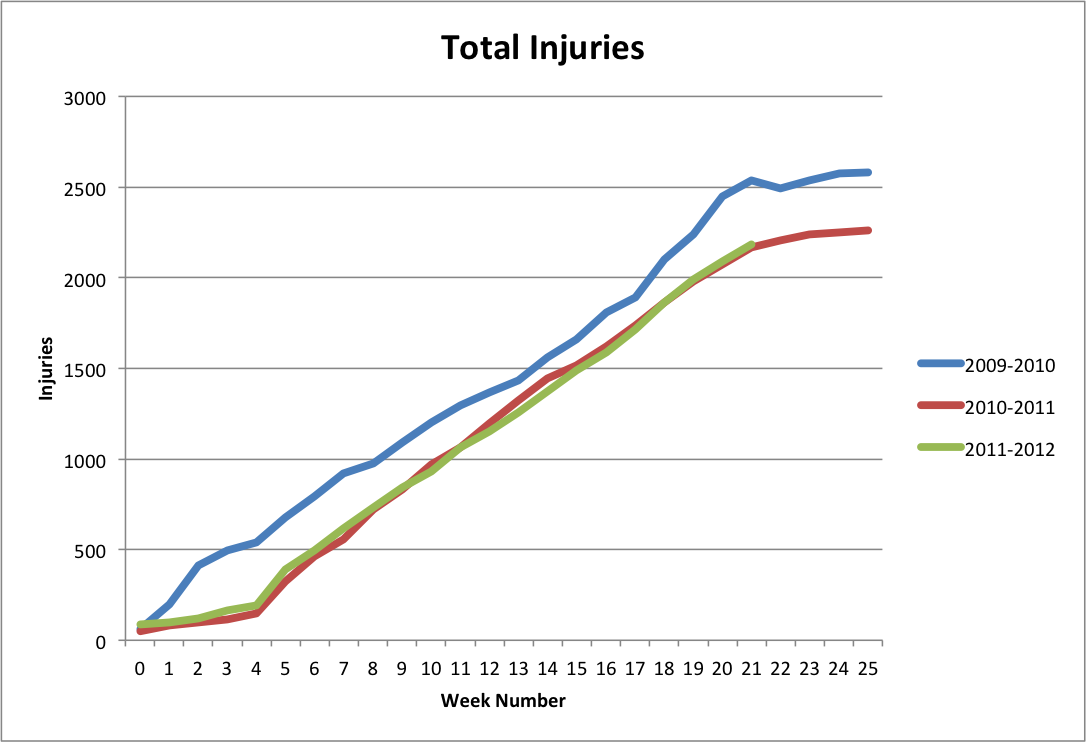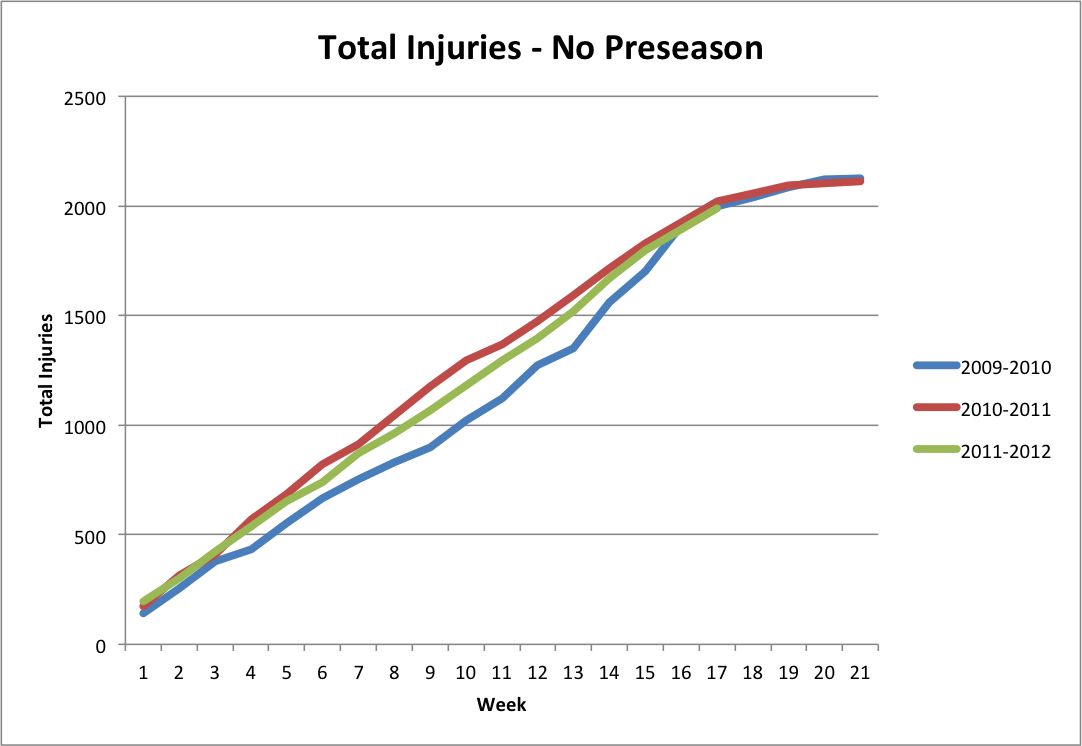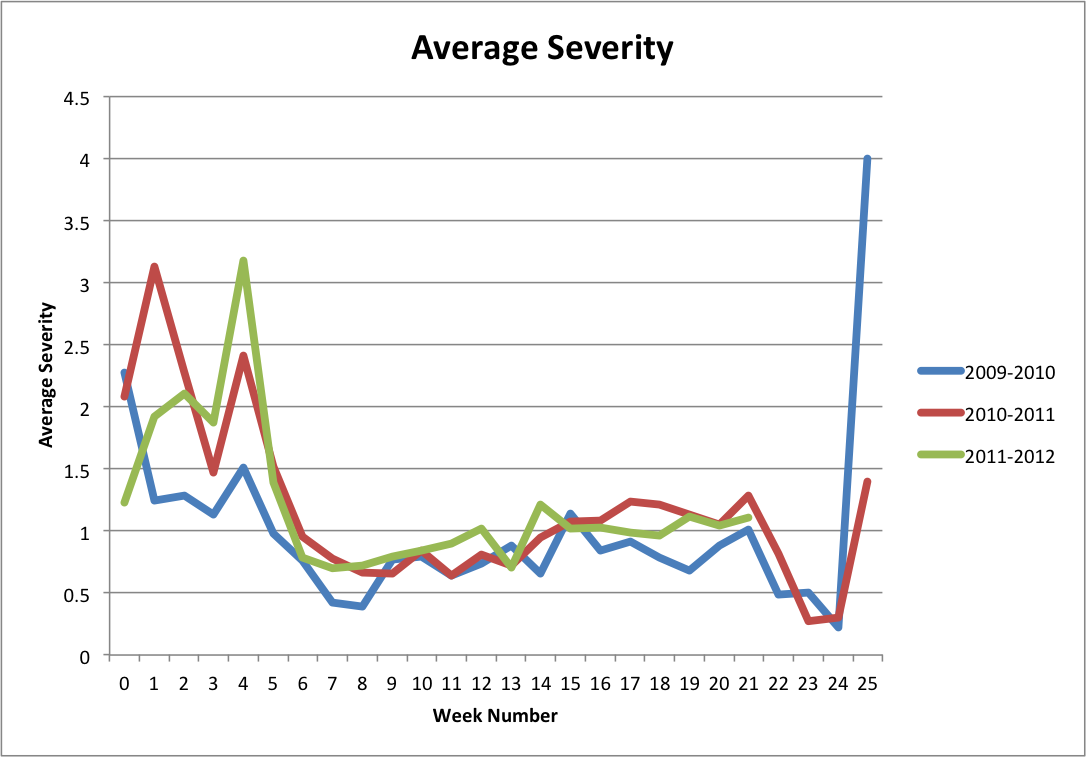The Lockout Did Not Increase Injury Rates In The NFL
January 11, 2012 - by David Hess
[Editor’s Note: This article was conceived of and written by Kevin Meers using data provided by TeamRankings, and is cross-posted at the Harvard Sports Analysis Collective blog. If you are similarly interested in using our data for a cross-posted article, or just interested in writing a guest post here on the TR blog, please don’t hesitate to email us.]
Last November, I wrote a post on how the lockout did not significantly affect injuries in the NFL this season. Now that the regular season is over, I wanted to take another look. The much discussed lock out could have exacerbated or limited the mounting “wear and tear” and “buildup of cuts and bruises” that develop throughout the season. In reality it did neither. There was almost no difference in injuries this season when compared to the past two years. For various reasons, there has been a lot more attention paid to the injuries that did happen. That increased attention has made it appear that there were a lot more injuries this season, despite efforts by the NFL to limit concussions and hits on defenseless players. If the league is serious about reducing injuries, that attention needs to focus on prevention going into next season.
As the graph below clearly shows, injuries this season are almost exactly the same as the past two years. This constant level of injuries suggests that neither the lockout nor the recent rule changes have had any significant effect on the number of injuries in the NFL.
While it appears that the past two seasons have had a lot fewer injuries than the 2009-2010 season, that difference stems from an extremely high injury rate in the first two weeks of the preseason that year. Removing the preseason, it is clear how little the number of injuries has changed over the past three years.
To accompany this consistent injury rate, injury severity has not changed either – despite the NFL’s recent efforts to penalize and fine players for dangerous hits. Those policies are good for the health of the players, but more should be done if the NFL wants to protect the men on the playing field. To calculate severity, I created a system where a player listed as “probable” had a severity of 0, “questionable” equaled 1, “doubtful” was 2, “out” equaled 3, and “injured reserve” was 4. A metric like “weeks missed” would be better than this system, but those data, unfortunately, are hard to come by. Below is a graph of average severity in each week of the season. As you can see, severity is well within the normal range of the past couple of seasons.
Furthermore, through the end of the regular season, 308 players have been placed on I-R, compared to 259 in the 2009-2010 season and 338 in 2010-2011. Even the most serious injuries have not fallen significantly.
With so many big name players seriously injured this season and recent studies on the effects of concussions on players’ long term health, talk about injuries has become commonplace this season. It may simply be that football as it is played requires this level of injuries. It is up to people who know much more about football than I do how much, if at all, the NFL should change the game to ensure the safety of its players. What I am putting forward here is simple: neither the lockout nor recent rule changes has significantly changed the injury rate or the severity of those injuries. For that to change, the NFL must continue to change its rules.
Printed from TeamRankings.com - © 2005-2024 Team Rankings, LLC. All Rights Reserved.


